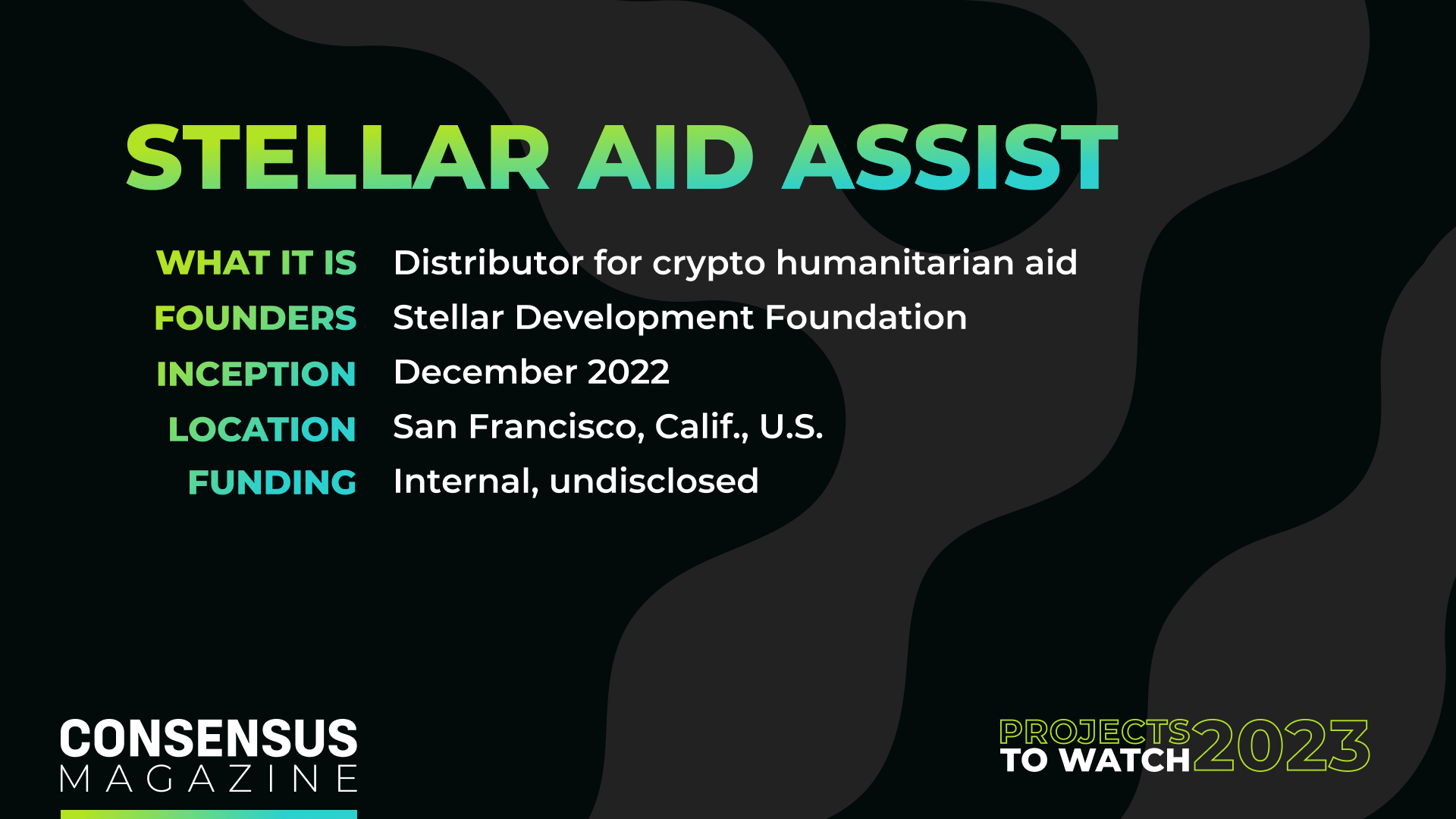Featured SpeakerNeha Narula
DirectorDigital Currency Initiative
Neha will join CoinDesk’s Michael Casey for “Remember Why We’re Here: Crypto’s True Purpose.”
The problem:
The first and most essential response to famine, war, natural disasters like earthquakes and tsunamis, or other crises is food, clothing and shelter. These are the essentials to staying alive. But once disaster victims are made stable and have the clothes and food they need, giving them more can actually become a burden.
In recent years, aid organizations have recognized that cash donations, which are easier and quicker to distribute than physical goods, are necessary to help disaster victims rebuild their lives. This temporary receipt of cash aid preserves the agency of choice for recipients, who can decide when and how to spend the money to help them to restart their lives.
But cash aid has its own issues. Moving physical cash around is difficult and dangerous in many disaster and post-disaster situations. The cash can depreciate in value and, in many cases, can be pilfered by corrupt middlemen. That’s why a number of aid organizations have turned to digital cash transfers to help reduce that risk.
With digital cash transfers, humanitarian organizations have to act quickly to figure out delivery systems that work wherever the crisis is located. They need to take cash from millions of well-meaning donors in multiple currencies, exchange the value into a currency that the recipients can use and also be transparent so they can report to donors how the funds were spent. On top of all of this, the aid organizations need to provide this cash efficiently and cost-effectively, because the most basic tenet of humanitarian aid is that the recipient does not pay for the assistance received.

STELLAR AID ASSIST
If cash is king in times of crisis, but moving around physical cash is difficult and digital bank transfers can’t reach recipients without access to a bank account, is crypto the solution?
The Stellar Development Foundation (SDF) – the nonprofit that supports the growth and development of the open-source, decentralized Stellar Network – certainly thinks so. Shortly after the invasion of Ukraine by Russia last February, SDF got to work developing a disbursement platform designed to help relief organizations distribute cash aid more efficiently.
With input from the United Nations High Commissioner for Refugees (UNHCR), the U.N.’s refugee agency, SDF developed and launched Stellar Aid Assist in less than 10 months.
Stellar Aid Assist allows humanitarian organizations to send bulk stablecoin payments – in the form of Circle’s dollar-pegged USD coin (USDC) – to recipients in need. Unlike traditional cash transfers, payments through Stellar Aid Assist can be made safely, nearly instantaneously and with complete transparency on where and when the funds arrived – all without the interference of potentially sticky fingered middlemen. It’s also basically free to use.
An aid organization would have to do approximately 100,000 transactions before seeing a dime in gas fees, said Tori Samples, a senior product manager at SDF who oversees Stellar Aid Assist. The wallet used by Stellar Aid Assist – the Vibrant wallet – is also free, though Samples said that could change in the future.
“One of the principles of humanitarian aid is that recipients never pay to receive any money,” Samples said. If Vibrant becomes a paid wallet some day, “that would be a negotiation between the off-ramp and the aid organizations sending funds to make sure that the recipients don’t receive any fees. If anything, those will be charged upstream to the organization.”
Stellar Aid Assist’s platform doesn’t just make things easier for the humanitarian aid organizations. It also benefits the end users, who get cash quickly and securely without needing a bank account.
As Samples pointed out, unlike donations of local currencies, USDC can serve as a hedge against inflation or local currency devaluation, and it’s protected digitally until the recipients need it. When they’re ready to cash out, the aid recipients can go to any MoneyGram location in the world and exchange their USDC for the equivalent amount of local currency, either in a physical or digital form.
Battle-tested
Though Stellar Aid Assist can be used to give humanitarian aid in any crisis around the world, Samples said it was designed with Ukraine in mind.
The development of Stellar Aid Assist “was a response to the full-scale invasion of Ukraine in February of last year,” Samples said. “People have been doing cross-border payments on Stellar since 2014, but [the war was] when the need for this mass payout system became very clear.”
There are currently two public pilots using Stellar Aid Assist to give cash to refugees in Ukraine, one through the UNHCR and the other through the International Rescue Committee (IRC), a New York-based international humanitarian aid organization founded at the request of Albert Einstein.
These pilots appear to be quite small. A recent story in Wired about Stellar Aid Assist puts the number of test users in Ukraine who have received donations at less than 100. Samples declined confirm the size of the pilots.
Though that number is miniscule compared to the estimated 5 million Ukrainians who received cash assistance last year, it serves as a proof of concept that stablecoin-denominated cash payments could seriously improve the way humanitarian aid is done.
Since launching the first version of Stellar Aid Assist in December 2022, Samples said the SDF has been focused on expanding the platform to ensure that it can be more customizable for future crises, where recipients may not be as financially and digitally literate or connected as Ukrainians.
SDF has had “conversations with a lot of humanitarian organizations,” Samples told CoinDesk, but only the two currently known pilots in Ukraine have been made public.
Prioritizing ease of use
In order for donations made through Stellar Aid Assist to be helpful to their intended recipients, it has to be easy to use for everyone, from the administrators at the aid organizations all the way down to the recipients, including people with zero crypto experience.
Making a user-friendly interface was top of mind when developing Stellar Aid Assist, said Stellar Development Foundation CEO and Executive Director Denelle Dixon.
“We built Vibrant with the notion of having the noncrypto user leverage it, so the [user experience] design is much different and much simpler,” Dixon said. “It’s much more in line with what a user might expect if they’re using a type of payment wallet or Venmo or whatever the equivalent might be.”
Dixon stressed that ease and efficiency is the project’s priority, not converting people into crypto users.
“The point of the aid is to get the aid to them so they can use it, hold it, do what they need to do with it and not to get them hooked on anything else,” Dixon said.
The importance of off-ramps
Stellar Aid Assist’s simplicity for end-users could not be achieved without its long-standing partnership with MoneyGram, the Dallas, Texas-based cross-border payments and money-transfer company.
Dixon told CoinDesk the partnership was nearly four years in the making when Stellar Aid Assist launched in December.
“We’ve always been very much about the on- and off-ramps, recognizing that if crypto and blockchain are really solving the problem for the unbanked and the underbanked, then you really shouldn’t need a credit card or a bank account to be able to join the solution,” Dixon said.
“Focusing on that cash on- and off-ramp was a really important piece of our work, holistically, and MoneyGram was the perfect partner for that because they have 400,000 agents all over the world,” Dixon added.
Dixon described the platform’s relationship with MoneyGram as “transformational” but said the project – which launched in the immediate aftermath of the FTX crypto exchange’s spectacular collapse in November – hasn’t gotten a lot of attention from either the media or lawmakers.
Ultimately, Dixon said, it didn’t really matter whether anyone was paying attention – only that the platform was helping get aid into the right hands.
“It just doesn’t matter, because we’re going to do this and we’re doing what’s right, and we’re using this technology in a way that’s fit for purpose,” Dixon said. “It will get the right amount of attention from regulators, policymakers and humans when they’re ready to absorb it.”
Dixon said that while Stellar Aid Assist might be a good demonstration of the value of blockchain technology, it’s more importantly a rail that aid organizations can use to help more people.
“Giving [relief organizations] a tool that helps them to put more dignity and humanity into the hands of those who might not feel any of that in the moment … it’s such a beautiful way to show the value of payments and really get to the humans on both sides” of aid distribution, Dixon said.
Edited by Jeanhee Kim.
https://www.coindesk.com/consensus-magazine/2023/04/17/stellar-aid-assist-uses-stablecoins-for-humanitarian-relief/?utm_medium=referral&utm_source=rss&utm_campaign=headlines






 BTC-USD
BTC-USD  ETH-USD
ETH-USD  LTC-USD
LTC-USD  XRP-USD
XRP-USD